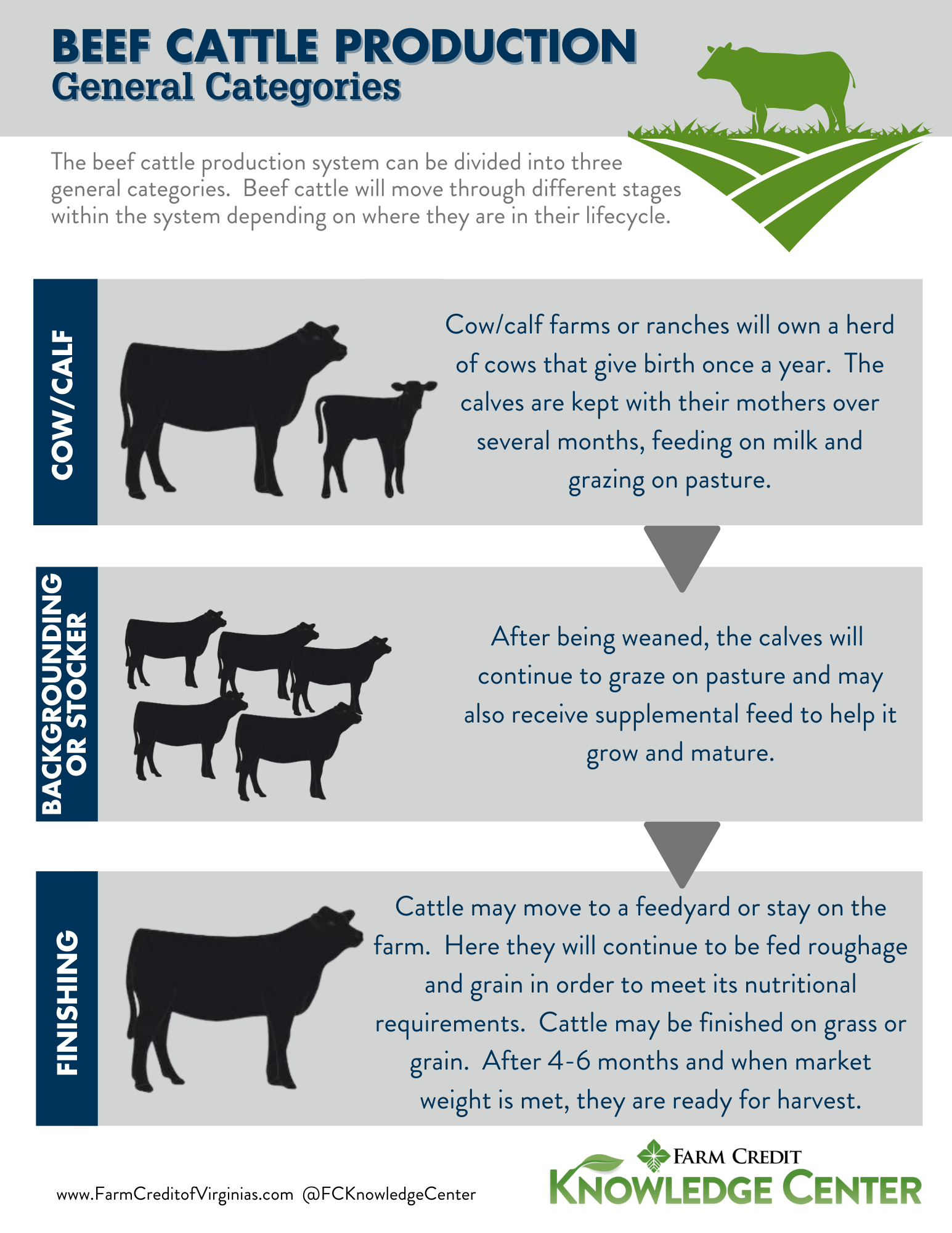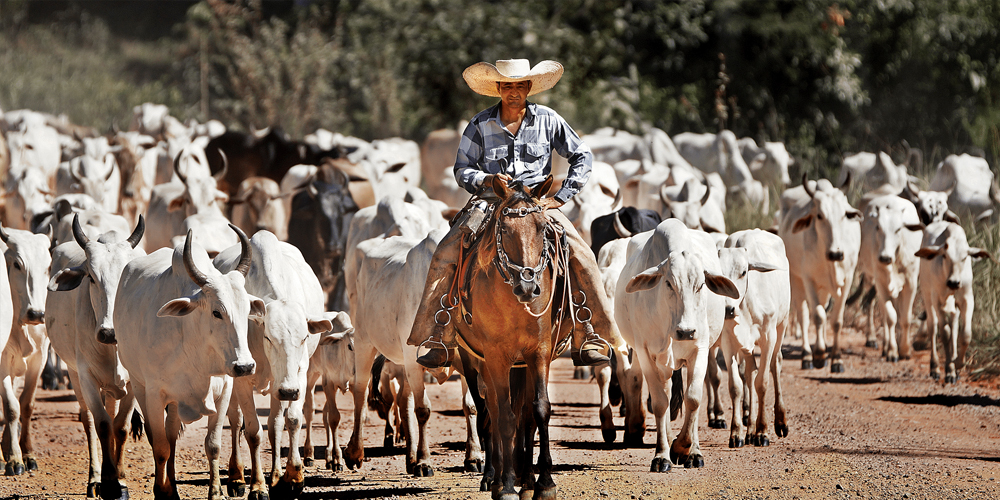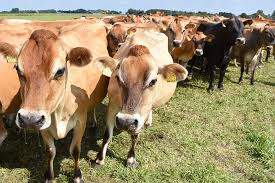Major Production Constraints of Cattle
Beef cattle are primarily raised for meat (except dairy cattle, used for milk production). The meat of mature or nearly matured ones is commonly referred to as beef.
However, there are three major stages in beef production which include: cow-calf operations, backgrounding or the stocker phase, and feedlot operations phase.
The cattle production cycle begins with cow-calf operations, which are specifically designed to breed cows for their offspring.
The calves are then backgrounded for a feedlot with the goal of fattening.
Animals that are not raised for feedlots are typically female and are referred to as replacement heifers.
While meat production is the primary use of beef cattle, other uses include leather and beef by-products used in candy, shampoo, cosmetics, and insulin.
They feed on forages (including grass and legumes), silage, supplements, or complete diets to meet their nutritional requirements.
Read Also: Snail Meat is Unique: Health Benefits, Nutrition and Importance
The beef cattle production system is divided into three broad categories, which are as follows:

1) The cow-calf segment gives birth to the feeder’s calves for further feeding/grazing.
Cow-calf farming or ranching entails keeping herds of mature cows, mating them, and raising the calves to wean age (around six months).
2) Backgrounding, also known as the stocker phase, is the process of adding bodyweight to recently weaned calves, resulting in feedlot-ready yearlings.
Stocker production or backgrounding – The weaned calves are grown on forage and/or pasture for another six to twelve months at this stage.
3) Cattle are fed until they reach market weight during the finishing stage of production.
Cattle that have completed the stocker phase are moved into confinement and fed diets containing a significant proportion of cereal grain or other high energy sources until they reach market weight. Some calves may be placed in feedlots immediately after weaning.
Meanwhile, many farmers focus on just one stage, while others combine all three into a single operation.
Read Also: Brooder Guards and It’s Uses in Poultry Farming
Major Production Constraints of Cattle

Below are the major production constraints of cattle production with regards to feeding supplies, Breeding, Diseases, and Land Tenure as well as how to handle the problems according to their level of problems to maximize profit in cattle production using Nigeria as a case study.
1. Free Supplies
The provision of feed that is adequate both in quantity and quality is available all years round countries to be one of the major problems of cattle production in Nigeria.
Communal grazing of the natural range is the primary source of nutrients supplemented by crop residues during the dry season.
Feed supplies during the latter when natural vegetation becomes rank and unpalatable, are particularly acute and is aggravated an imbalance between stocking rate and range carrying capacity.
A consequence of overstocking is a high incidence of erosion and a reduction in the capacity of such an area to produce feed in the following growing season.
This is the case in many of the country‘s high cattle production area (e.g. Mambilla and Jos Plateau) and become extremely acute in the Sahelo-Sudanian savannah ecologic zone, where the dry season is often long and severe.
When it is prolonged for more than a season, as was the case during the Sahelian drought of 1972-74, considerable losses in animals usually result. Apart from the drastic reductive function may result as well as a general lowering of the animal’s resistance to disease.
Expanding arable cultivation is further limiting the natural range area that is available to the livestock owners and in 1965 a program of establishing grazing reserves was initiated in an attempt to secure a year-round source of forage feeding for the traditional herds.
The reserves were to provide infrastructures-water, access roads, and a centre for the provision of inputs such as feed supplements and minerals licks.
However, the grazing reserve programs have not provided herds, the expected solutions to the feed problem of the traditional herds, and further review of their function and development is required.
Read Also: How to Control and Prevent Disease Outbreak on your Poultry Farms
A supplementary feed program was also initiated to prevent the seasonal weight losses resulting from low herbage and the long distances trekked by the animals with the attendant risks of disease transmission and parasitism.
It was also seen as an attempt to encourage settled animal production among the traditional livestock producer.
The first attempt was in 1926/63 by the then Northern Nigeria Government under the Fulani Amenities program aimed at introducing concentrate feeding to cattle to reduce loss in weight especially during the peak of the dry season.
The subsidy loss element of the program was to be phased out over a 6 year period by which time stock owners were expected to recognize and appreciate the benefits of supplementation.
The supplementary ratio took the form of equal parts of groundnut cake and cotton seed cake, 2% common salt plus mineral salt licks.
The scope of the program has since been broadened and redesigned to demonstrate to the traditional livestock producers producer the economic benefits of feeding supplements such as hay, groundnut, cottonseed cake, etc. observations however indicate that the program has not the desired effect due largely to the inadequate and untimely distribution of the supplements.
To some extent, poor infrastructural facilities (transport, storage) and lack of personnel have been responsible for this and have led to poor coverage of the remote areas alone with inconsistent supply.
An imbalance between demand and supply has encouraged undesirable commercial exploitation, and there is evidence of an increasing shortage of the major ingredients used supplementary ratio formulations in the last few years.
Read Also: Methods of Genetic Improvement in Livestock Breeding
2. Breeding
Breeding programs to achieve improved milk and to a lesser extent meant production, have adopted the following approaches:
1. Crossing indigenous cows with bulls (naturally or by Artificial Insemination AI) of higher producing exotic breeds, mainly the Holstein-Friesian and to a lesser extent the Brown Swiss and South Devon cattle.
2. Importation and maintenance of purebred exotic herds.
Achievements in both approaches have so far been impaired due largely to the lack of a properly coordinated national breeding policy program.
Cross-Breeding has not followed a clearly outlined objective; rather some form of upgrading has been done but there is no definite evidence yet as to what stage this upgrading should be stopped.
The reproductive performance of cows is an important consideration when assessing the achievements of breeding works already carried out since this trait is correlated with milk production. Data from both Agege and Vom which showed large variations in all the traits indicated that little culling had been practiced.
The long calving intervals recorded may be due more to management problems, particularly heat detection and prompt service especially where AI is practiced. Faulty feeding has also been implicated, as well as the lack of regular pregnancy checks as cases of ovaries were quite common in some of the herds.
The conclusions from the experiences of the breeding approach on the government ranches and dairies so far, are:
1. That there are possible benefits in crossbreeding, but there must be well-defined national objectives for milk and beef production and a well-organized AI program. Such objectives will guide the choice of exotic breeds to use and possibly the source of such importation.
2. The programs should be spelled out to ensure continuity in execution and a continuous evaluation of achievements.
3. The pioneer or pilot urban dairy projects have made some contributions to our knowledge of the problems of commercial milk production in Nigeria. They, therefore, remain a useful component in our attempts to establish an organized dairy industry in the country.
4. There is now a sufficient technical base on which to formulate guidelines for the management of existing and proposed stations for commercial dairy and beef breeding and production operations.
Read Also: Semi-intensive System of Livestock Production
Given such conditions, it should be possible in the next decade to extend the benefits of these programs to increase the productivity of the national herd.
3. Diseases
The important epizootic diseases of cattle in Nigeria include rinderpest, contagious pleuropneumonia, foot and mouth disease, anaplasmosis, babesiosis, and of course trypanosomiasis. These diseases limit production in cattle wherever they occur.
In particular, trypanosomiasis has rendered millions of hectares of land unsuitable for cattle production. Dematophilus has become important particularly among the imported stock on government dairies and amongst the indigenous breeds, particularly in the higher altitude areas of Jos, Mambilla, and Obudu plateau.
Foot and mouth disease is also assuming importance with the increase in the importation of exotic cattle. Mastitis is also known to be assuming significance especially given the increasing emphasis on commercial dairy development.
Tick-borne diseases, such as heartwater, babesiosis, anaplasmosis are especially important in imported cattle herds.
Although some progress has been made in the diagnosis and control of some of these diseases, those remaining constitute a potential hazard to cattle production in Nigeria.
Not much headway has been made against such as coetaneous streptothricosis, heartwater, brucellosis, tuberculosis, vibriosis, and mastitis, most of which may result mainly from bacteriological infection. There are also nutritional, toxic metabolic, and organic diseases.
Together these reduce the productivity of the national herd, although their effects may not be as telling as those of the major epizootic diseases.
4. Land Tenure
The trend of increasing settlement by pastoralist cattle owners, which has occurred over the last decade, can be attributed to several reasons:
• The Sahelian drought of 1972-1974 severely affected the crop farmers, also indirectly affected pastoralists, for apart from feed shortages for their stock it also upset the pastoralists’ ability to get food in exchange for milk and milk products. This forced many to cultivate crops for their consumption.
• The need for a national, state, and LGA identity, particularly the struggle for ethnic recognition was more emphasized during the last decade than ever before and has provided additional motivation to settle.
Despite the trend, however, land tenure remains a major obstacle to development for the grazers does not have secure individual rights to land.
For with very few exceptions, right over a land, whether cultivated or uncultivated, it already claimed by the traditionally settle communities practicing crop cultivation.
As a result, the presence of settled pastoralists is accepted as a concession rather than a permanent tenure and rarely extends beyond the area of crop cultivation except concerning the traditionally recognized rights of communal range grazing.
In such cases, the grazers have neither the opportunity nor incentives to invest in land improvement so that they are unable to realize the full potential benefit that settlement should allow. This remains a critical issue in cattle development in Nigeria, the implications of which are outlined above.
Read Also: Things to do to make your catfish grow faster within a short period of time









